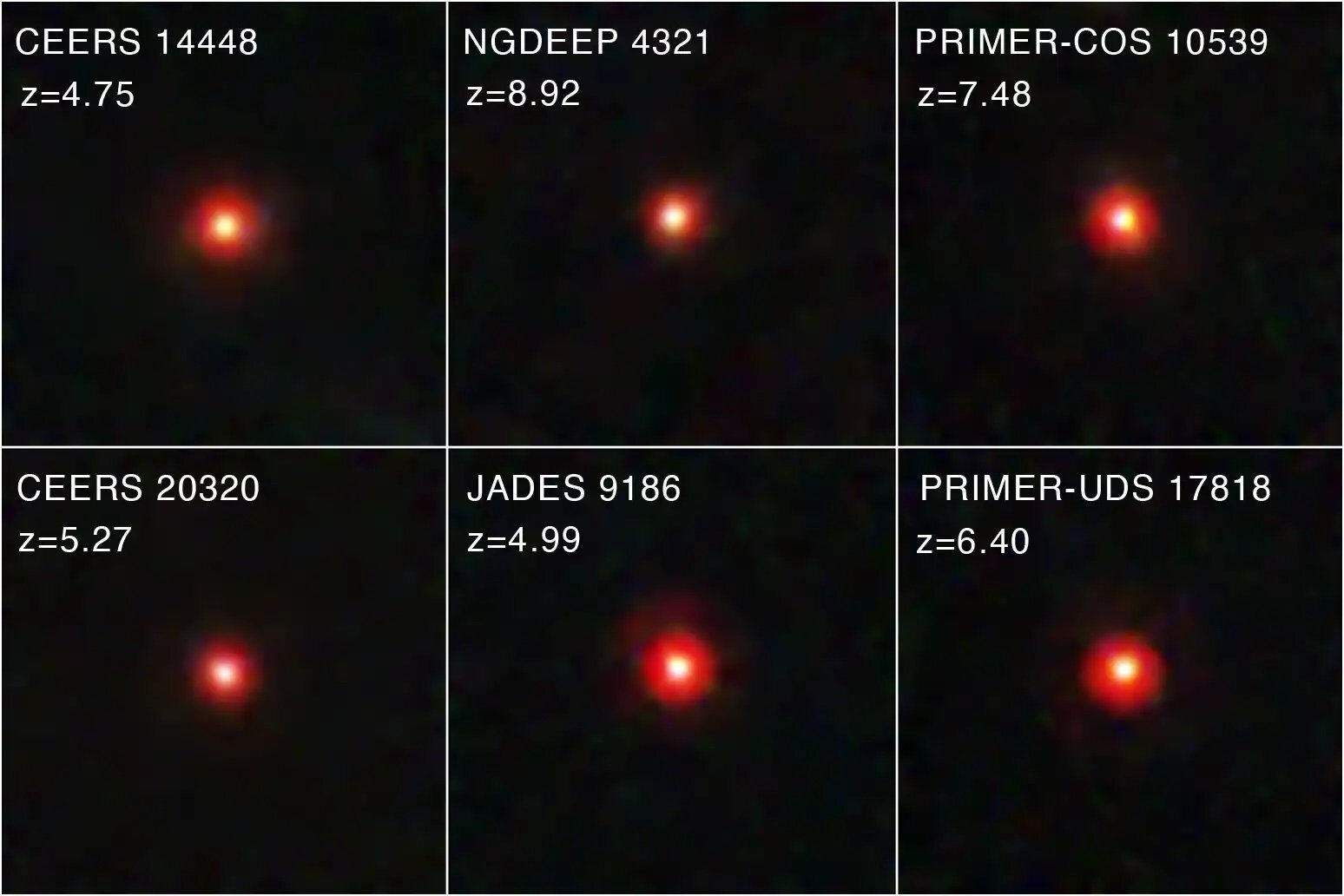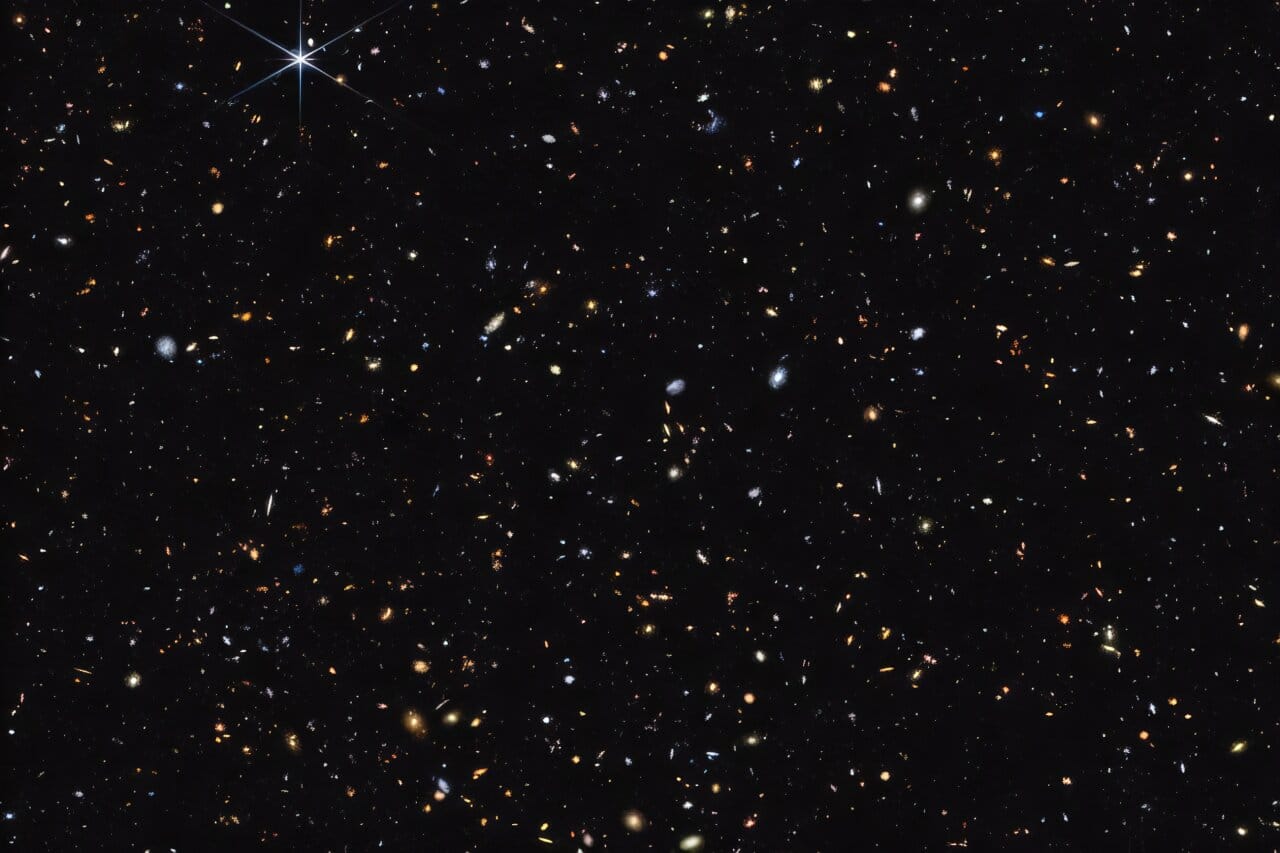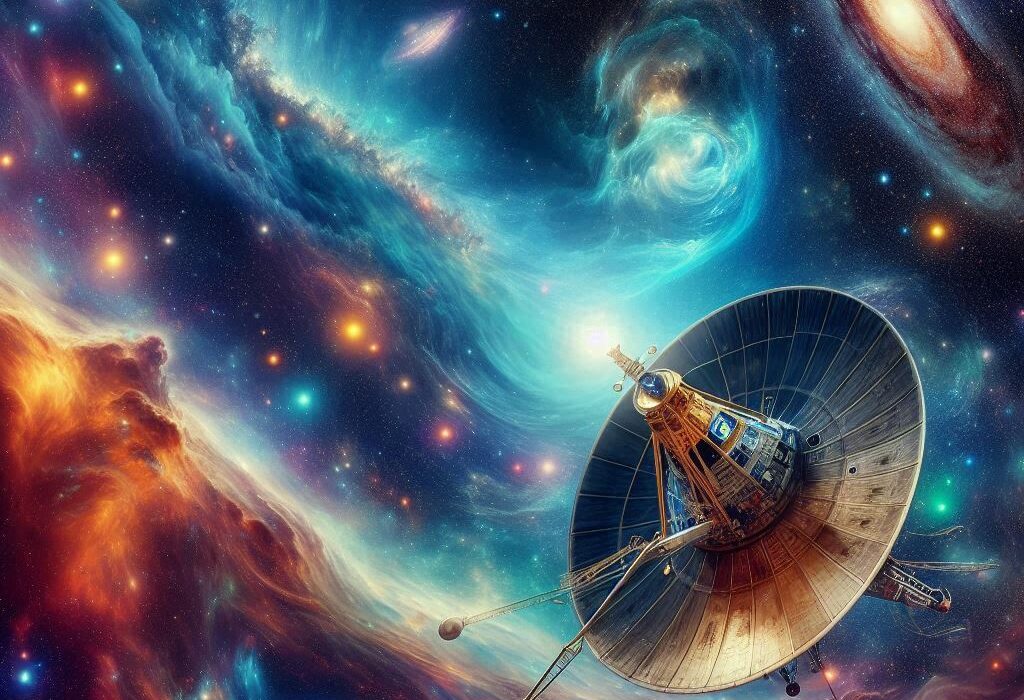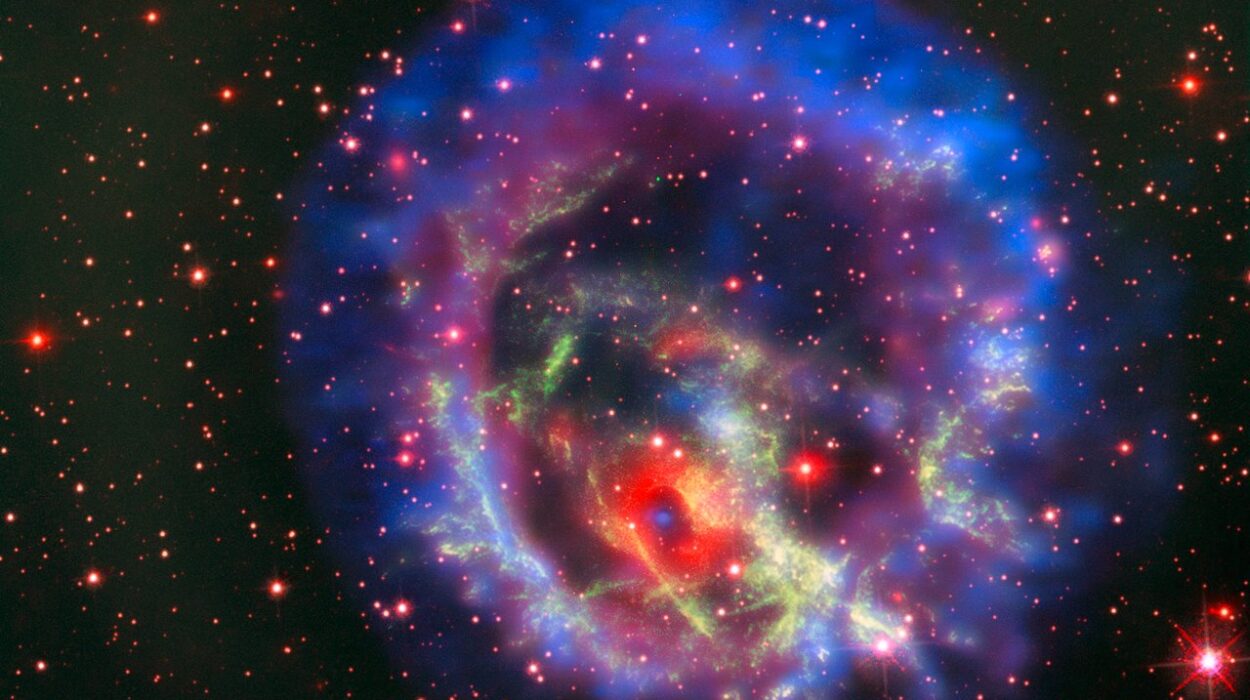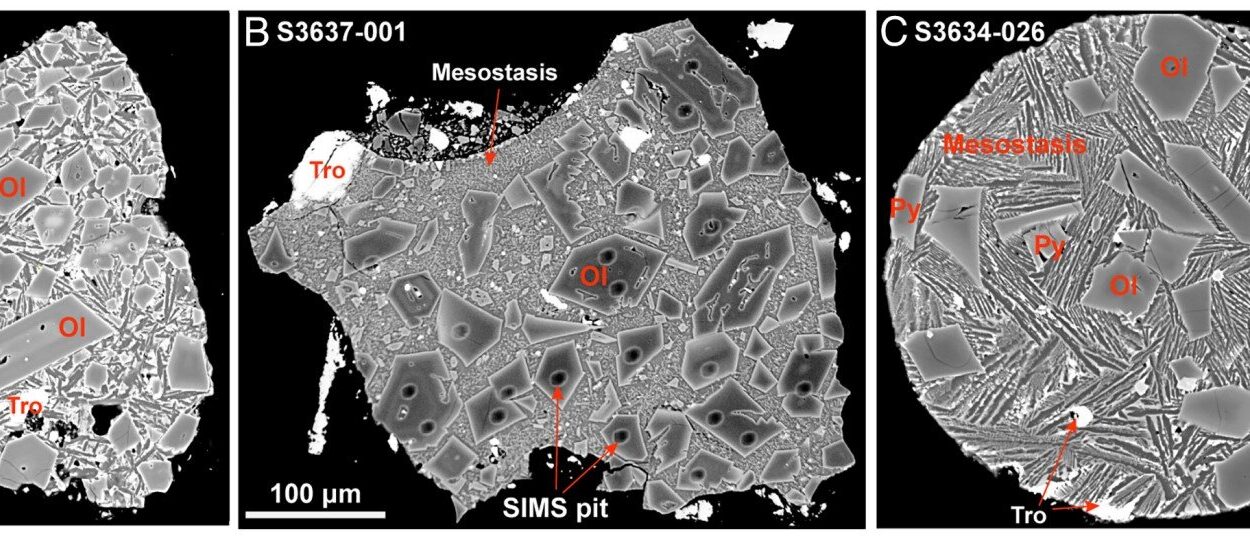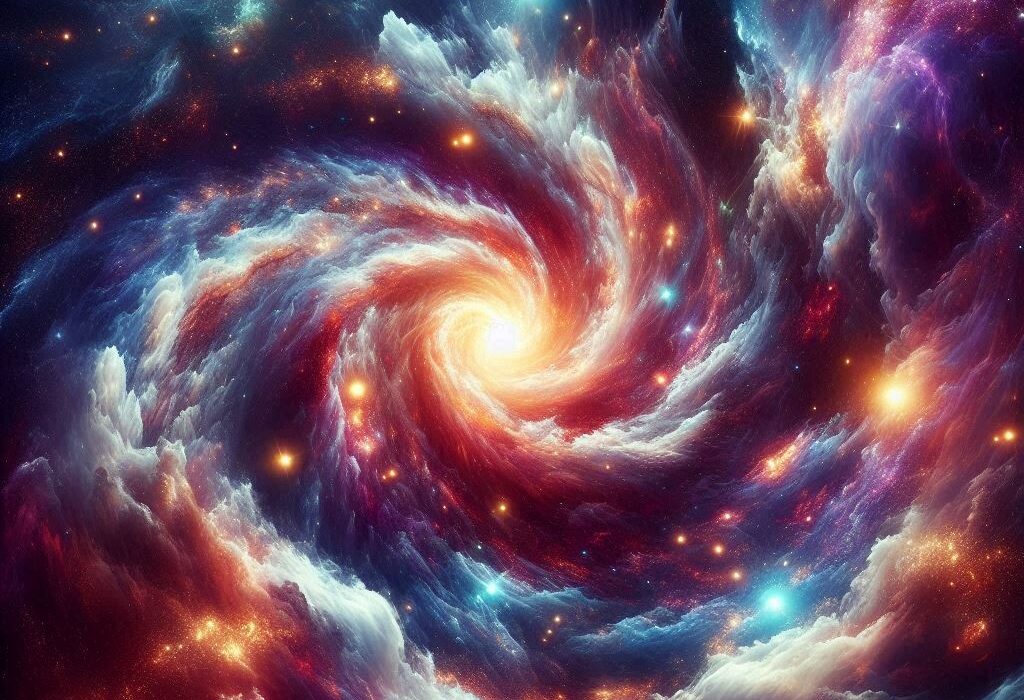When the James Webb Space Telescope (JWST) opened its golden mirrors to the cosmos in 2022, humanity’s view of the universe changed forever. Built to peer deeper into time and space than any telescope before it, Webb began revealing light from galaxies born mere hundreds of millions of years after the Big Bang. Among its earliest surprises was something astronomers didn’t quite expect: tiny, glowing “little red dots” scattered across the deep cosmic fields—enigmatic, compact sources of light that defied easy explanation.
To the naked eye—or rather, to Webb’s infrared vision—these dots looked like faint rubies shimmering in the darkness of space. Yet their color and compactness suggested something extraordinary. What were these tiny red galaxies doing in an era when the cosmos was barely a toddler? And why did they appear so dense, so red, and so mysterious?
These questions have ignited one of the most fascinating debates in modern astronomy, and the answers may rewrite how we understand the birth of galaxies, stars, and even supermassive black holes.
The First Glimpse of the Little Red Dots
In December 2022, Webb’s deep-field observations revealed multiple compact, red-shifted objects—now known as Little Red Dots (LRDs). The color was not an illusion. These galaxies existed when the universe was only a few hundred million years old, and because their light had traveled for more than 13 billion years to reach us, the cosmic expansion stretched it into the deep red end of the infrared spectrum.
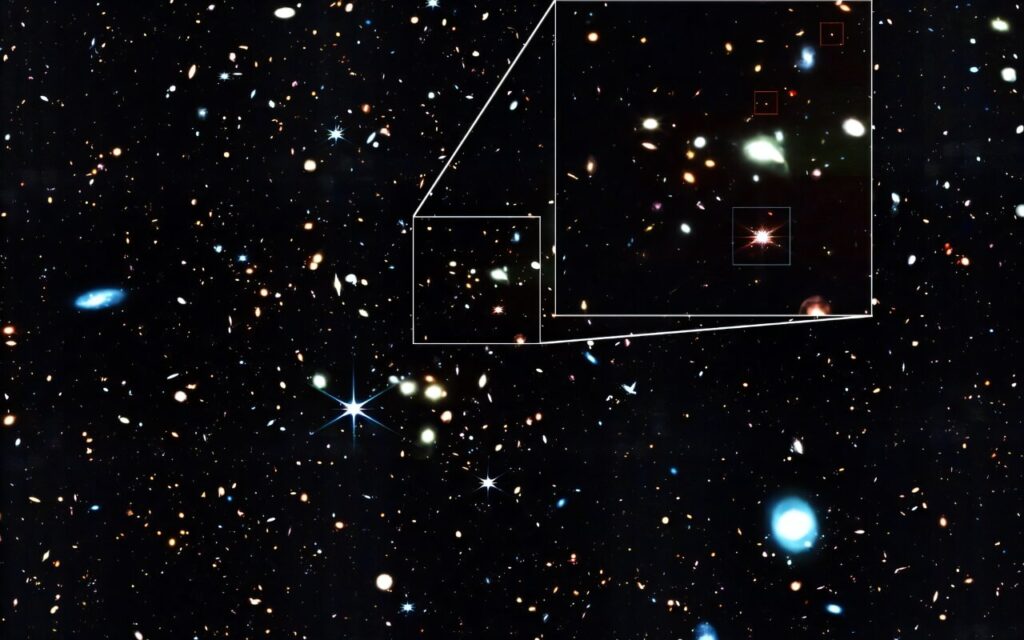
But redshift alone wasn’t enough to explain the LRDs’ deep crimson glow. Astronomers soon realized these galaxies were unusually red even after accounting for distance. That redness hinted at either enormous amounts of interstellar dust, which absorbs blue light, or powerful internal processes, such as the energy emitted from feeding black holes.
Two competing ideas quickly emerged: one proposing that LRDs were simply stellar-only galaxies—dense, dusty star factories—and another suggesting they harbored massive black holes at their hearts, making them early versions of what astronomers today call active galactic nuclei (AGN).
Each theory paints a very different picture of the early universe.
The Stellar-Only Hypothesis: Galaxies Born in Fire
In one corner of the debate stands the “stellar-only” interpretation. According to this view, the Little Red Dots are galaxies packed so tightly with newborn stars that their light, filtered through thick cosmic dust, appears red. These galaxies would be miniature versions of modern dusty starburst galaxies—like cosmic ovens, burning with intense star formation.
If true, this means that even in the earliest epochs of cosmic history, nature was capable of creating extremely compact and efficient star factories. Some of these galaxies might have been barely a hundred parsecs wide—ten times smaller than the smallest known galaxies today—but weighing millions or even billions of solar masses.
That density alone makes them remarkable. Imagine a galaxy the size of a single globular cluster containing enough material to form hundreds of millions of stars. The pressure, temperature, and gravitational forces inside such objects would be extraordinary.
Yet, there’s a problem with this theory: stability. The hydrogen emission lines—the spectral fingerprints of gas within these galaxies—suggest that their stars are moving at extremely high velocities. Such intense internal motion would make these systems unstable over time, causing them to collapse inward.
That instability hints at something else lurking in their cores.
The Black Hole Hypothesis: Seeds of the Cosmic Giants
Enter the second theory: the MBH and galaxy interpretation. Here, “MBH” stands for massive black hole. This idea proposes that the Little Red Dots are not merely star-packed galaxies but early forms of active galactic nuclei—young galaxies whose central black holes are already growing, feasting on gas and dust, and releasing enormous energy.
The telltale evidence for this comes from the spectral signatures of the LRDs. Many display broad hydrogen emission lines (known as Balmer lines), a characteristic feature of gas swirling at extreme speeds around black holes. In modern galaxies, this phenomenon is typical of quasars and other active nuclei.
However, this explanation also has its mysteries. Unlike quasars, most LRDs don’t emit strong X-rays—the hallmark of feeding black holes. And the black holes they would need to contain appear to be unusually large compared to their host galaxies—up to 10% of the total mass, compared to the mere 0.1% observed in galaxies like the Milky Way.
Could such massive black holes exist so early in the universe? And if so, how did they form so fast?
These questions have puzzled astronomers since Webb’s first observations. But recent research may have found a bridge between the two theories—an elegant solution that suggests the stellar-only and black hole models aren’t rivals, but partners in an evolutionary story.
A Unified Theory: Stars That Gave Birth to Black Holes
In a recent study led by Professor Andrés Escala of the Universidad de Chile, an international team of astronomers proposed that the Little Red Dots didn’t start as black hole hosts. Instead, they began as pure stellar systems—ultra-compact galaxies forming stars at a furious rate. Over time, the extreme densities in their cores caused some of that stellar matter to collapse, creating the seeds of supermassive black holes (SMBHs).
Their paper, “On the Fate of Little Red Dots,” currently under review for The Astrophysical Journal, suggests that the two dominant interpretations are not contradictory but sequential. The LRDs we observe through Webb may represent a transitional phase—galaxies caught in the act of evolving from compact, star-filled systems into galaxies with powerful central black holes.
According to Escala and his colleagues, the lack of X-ray emissions from most LRDs is a clue to their youth. The black holes forming inside them are still too small or too shrouded in dust to emit detectable X-rays. Over cosmic time, these embryonic black holes would grow, eventually becoming the bright AGNs and quasars seen in later epochs of the universe.
This theory provides a natural explanation for the rarity of LRDs. They appear to exist only between redshifts z = 8 and z = 4—roughly during the universe’s first billion years. After that, they evolve into larger systems, merging and maturing into the types of galaxies we recognize today.
The Cosmic Implications: Where Giants Are Born
If Escala’s interpretation holds true, it could profoundly reshape our understanding of galaxy formation. For decades, astronomers have wrestled with a central puzzle: where did the universe’s supermassive black holes come from?
These cosmic giants, millions or even billions of times heavier than the Sun, seem to exist at the hearts of nearly all massive galaxies. But forming such enormous objects in less than a billion years after the Big Bang has always seemed improbable—unless their “seed” black holes were born in extreme environments.
The Little Red Dots may be those environments.
Within their ultra-dense cores, gravity could have been strong enough to trigger runaway collapse, where clusters of massive stars merged and imploded into black holes. Over time, these black holes would merge, feeding on surrounding gas and eventually reaching supermassive proportions.
In this light, the Little Red Dots may not be mere curiosities—they may be the cosmic cradles of the first supermassive black holes.
The Beauty of the Unknown
What makes the story of the Little Red Dots so captivating is not just their mystery, but what they reveal about the nature of discovery itself. The JWST, humanity’s most powerful eye on the cosmos, was designed to answer long-standing questions about our origins. Instead, it has gifted us new ones—questions that challenge our assumptions about how the universe works.
The debate over the LRDs’ true nature is a reminder that science is not a collection of facts but a living process—a conversation between evidence and imagination. Each red dot in Webb’s images represents a story written in light billions of years ago, a story we are only now beginning to read.
And whether these dots turn out to be stellar nurseries, the birthplaces of black holes, or something entirely unexpected, they all whisper the same truth: that the universe is far more inventive than we can imagine.
Looking Ahead: A Future Written in Starlight
As the James Webb Space Telescope continues to probe deeper into the cosmic dawn, astronomers will use every tool available—infrared, X-ray, and radio observatories—to unravel the mysteries of the Little Red Dots. Each new piece of data will bring us closer to understanding how galaxies and black holes grew together in the first billion years after creation.
Future missions, like the Nancy Grace Roman Space Telescope and next-generation X-ray observatories, will complement Webb’s discoveries, helping astronomers determine whether these faint red points truly mark the beginning of black hole formation—or if they represent a new, unimagined stage in cosmic evolution.
Whatever the outcome, one thing is certain: the Little Red Dots have already changed how we see the early universe. They are tiny beacons from the edge of time, reminding us that even in the faintest flicker of ancient light, there lies a story of creation, transformation, and infinite wonder.
The Eternal Allure of the Unknown
In the end, the mystery of the Little Red Dots is more than a scientific puzzle—it is a symbol of humanity’s endless curiosity. Each discovery Webb makes, each question it raises, pulls us deeper into the grand narrative of existence.
We are, in a sense, the universe studying itself—starlight turned to consciousness, peering back across 13 billion years to see its own beginning. And perhaps that is the most beautiful revelation of all: that in those tiny red dots, glowing softly at the edge of time, we are glimpsing not only the birth of galaxies, but the reflection of our own cosmic story.
More information: Andres Escala et al, On the Fate of Little Red Dots, arXiv (2025). DOI: 10.48550/arxiv.2509.20453
